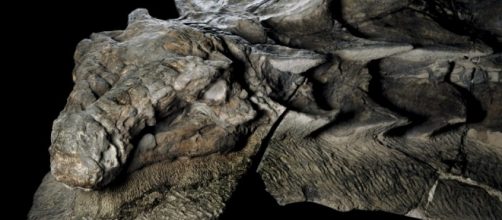A very unique Dinosaur Fossil that was found back in 2011, is now being put on display. It will be able to be seen in Canada's Royal Tyrrell Museum of Paleontology. Tyrannosaurus Rex (T.Rex) is probably the most well-known dinosaur to have walked the Earth. These massive carnivores were an imposing 15 to 20 feet tall and weighed up to 9 tons. Now, a study published in the open access journal 'Scientific Reports' shows just how powerful their bite actually was.
Statue of a nodosaur
Back in March 2011, a mechanical backhoe at Alberta's Millennium Mine hit something that was much harder than the surrounding rock.
That something turned out to be a 2,500-pound dinosaur fossil, which was sent to a nearby museum to be studied. Once the statue-like fossil was cleaned up and examined, researchers found that it was a nodosaur.
A nodosaur is a member of the heavily-armored ankylosaur subgroup. It would have walked on four legs and been covered in scales, armor plates, and thick knobs. The fossil of this nodosaur was 18 feet long and weight about 3,000 pounds. It is believed that the fossil is so well preserved because the nodosaur was swept downriver by a flood and then floated out to sea. It then sank to the bottom of the ocean floor, coming to rest in the mine that it was found in millennia later.
The real power behind a T.Rex's jaws
The cone-shaped teeth of the T.Rex generated pressure up to 431,000 pounds per square inch at their tips. This means that the maximum pressure from the tips of their teeth was 28 times greater than it would be at the bottom of the deepest part of the Earth's ocean, in the Mariana Trench. Obviously, this was enough pressure to fracture even the strongest dinosaur bones. Paleontologist and co-author of the study, Gregory M. Erickson, put it best by saying the T. Rex's bite would be the equivalent of being hit by "a .45-caliber bullet with a mushroom head."
Scientists have known for a while that T. Rex's ate bones via fragments in their fossilized dung. However, reptiles do not gnaw on bones, as their teeth are not designed for the task.
The study used a computer model to determine not only the bite force of the dinosaur but also how it used its teeth. Whole limbs were likely in the creature's mouth when it ate, using pressure points and its teeth to crack into bones. The authors of the study say that their report is the first to ever have looked at the pressure exerted by the dinosaur's jaws.


